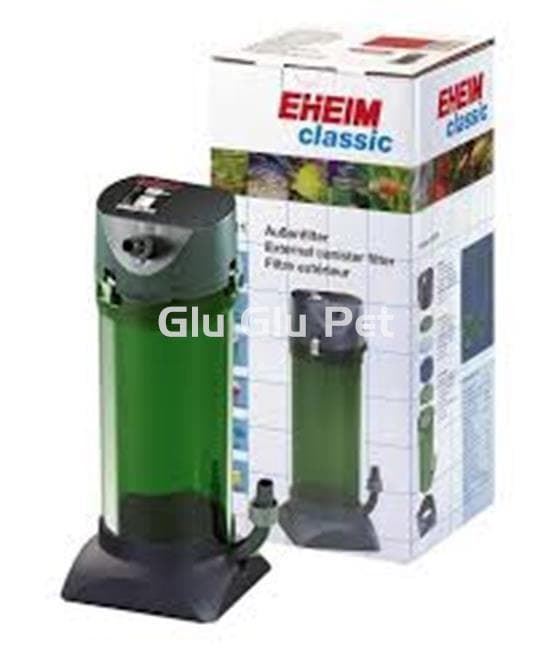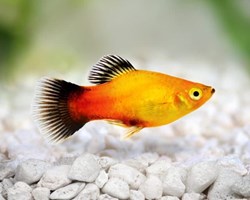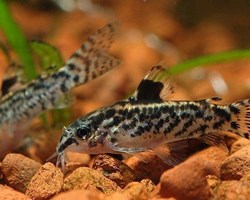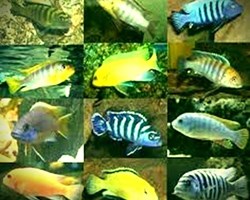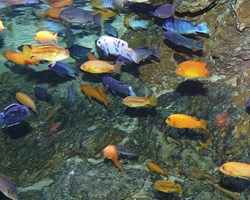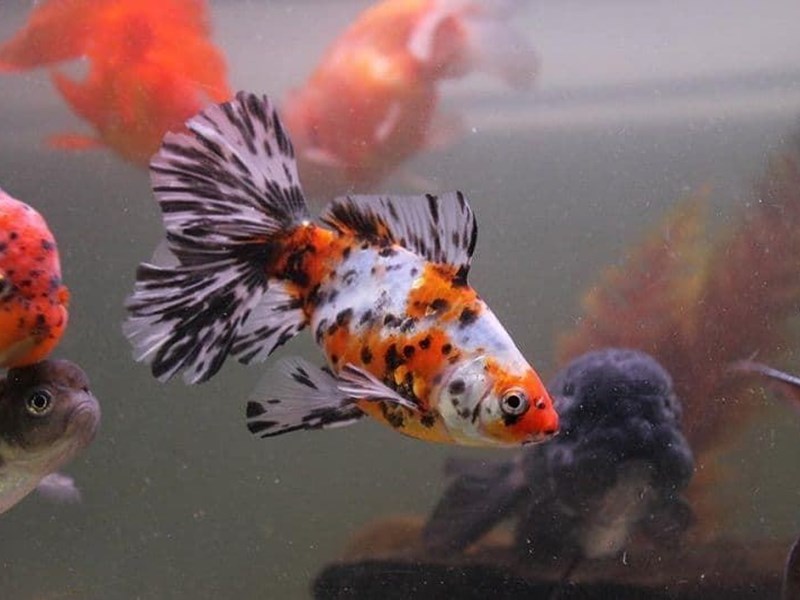
The Shubunkin is a variety of Carassius auratus, Goldfish, Red Fish or Comet Fish, as common names accumulate, due to the great popularity of this fish.
It is a fish of the Cyprinidae family, it is a cold water fish, which would be perfect living in a large aquarium, and also in an outdoor pond.
Like the different varieties of Goldfish: Telescope Fish, Lion's Head, etc., the Shubunkin is a variety of Carassius auratus obtained through the crossing and selection of specimens.
Sometimes the Shubunkin is confused with the Calicos, because their coloration is similar.
The first specimens have their origin in Asia (1900), where they began to breed and select.
It seems that he later traveled to the United Kingdom, finally arriving in the United States.
There are several details of the morphology of the Shubunkin that makes them so special and desired.
In the first place, their scales are very fine and transparent, giving the sensation of completely lacking them, although they do have them.
The other distinguishing feature that makes it such a special and desired fish is its color.
It is common to find specimens with a bluish base, dotted with black spots and patches of red.
Their coloration and spots are so chaotic that they seem to have been painted by a child... it is difficult for us to find two identical fish, even similar ones would be difficult.
It seems that originally the base was red, sprinkled with other colors, black being the main one.
With the multiple crosses that have taken place, it is common right now to find Shubunkin with a bluish base, mixed with other colors.
They have an elongated, slender, hydrodynamic body, very similar to the common Goldfish.
Fins short and rounded, somewhat flattened laterally: in all Shubunkin the caudal fin divided into two lobes.
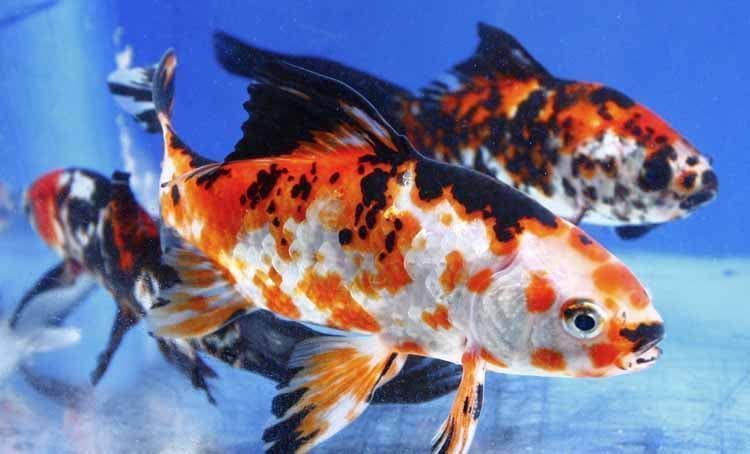
SEXUAL DIMORPHISM:
There are several ways to differentiate the male Shubunkin from the female:
- Females have a slight outward bulge at their anal opening, while in males it is inward.
- If the temperature of the aquarium or pond rises, we will be able to appreciate how in the females the belly seems more bulky.
- In males, small white granules can be seen on the gill covers and on the pectoral fins, called reproductive tubercles.
- We may not have been able to differentiate them before mating, from that moment on we will have it very easy.
- The males are the ones that chase the females, hitting them with their heads in the abdomen.
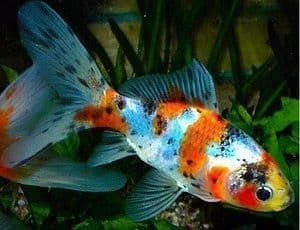
VARIETIES OF THE SUBUNKIN:
Although some varieties are difficult to find for sale, these are the most popular ones originating from the Shubunkin fish:
SUBUNKIN LONDON:
It is the most popular and easy to find variety.
It can reach 35 centimeters or more, and morphologically it is very similar to the common Carassius auratus.
Coloration is mottled, with blackish fins, while the tail fins are striped.

SUBUNKIN BRISTOL:
They are very similar to the previous ones, except that morphologically, their caudal fin is longer, wider and their coloration is more striped.
The caudal fin (divided into two lobes) in this variety is rounded and slightly more upright.
They are somewhat more stylized than most Shubunkin.
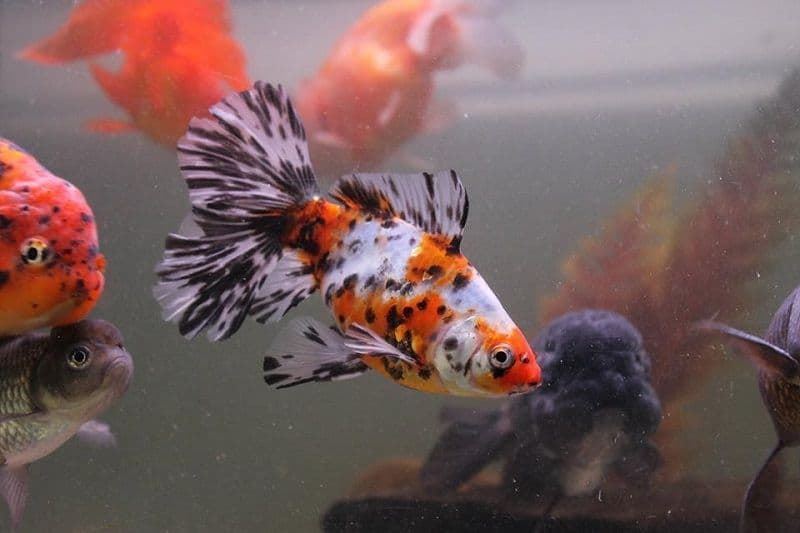
AMERICAN SUBUNKIN:
Very similar to the dorsal fin kite, with long pointed fins.
As a curiosity, it only has a single anal fin.
Its coloration is mottled.
COMET SUBUNKIN:
Its body is stylized, with highly developed fins.
The fins are usually colored black or brown.
DISTRIBUTION AND HABITAT:
The origin of the Shubunkin is that of the Carassius auratus: East Asia.
Where it gained the most popularity, without a doubt, was China, from where they left for different countries in the world after beginning their selection and crossing.
Its natural habitat is cold-water, slow-flowing rivers.
They are the ideal fish to keep in an outdoor pond, as they are able to withstand the low temperatures outside.
AQUARIUM CONDITIONS FOR THE SUBUNKIN FISH:
They need a good size aquarium, ideally 100 liters and up.
As a rule it is said that they need about 40 liters of aquarium per specimen.
The water conditions must move within the following parameters:
- Temperature between 16ºC and 20ºC´.
- pH 7 to 7.5.
- gH between 10º and 15º.
They are not very demanding fish, on the contrary, they are capable of resisting water qualities and temperatures very different from those I have marked for you, although these are the most suitable for a perfect state of health.
Inside the aquarium it is recommended that the plants be resistant, with hard leaves: Anubias, Java Fern, etc.
It is recommended that the water is well aerated, so adding a bubble diffuser can be a great decision.
The bottom of the aquarium is preferably gravel without edges and not very thick.
They perfectly admit that we add rounded stones and trunks to decorate.
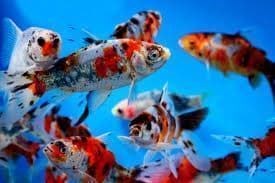
NUTRITION FOR THE SUBUNKIN FISH:
They are omnivorous fish.
We can use a diet with good quality dry food, supplemented with vegetables and live food, such as brine shrimp.
The smallest specimens can be fed with scales, while the largest ones will prefer food in granules or sticks.
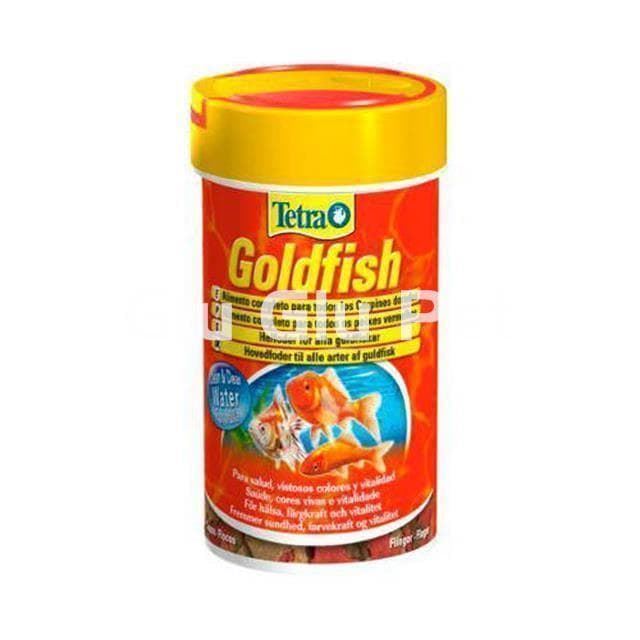
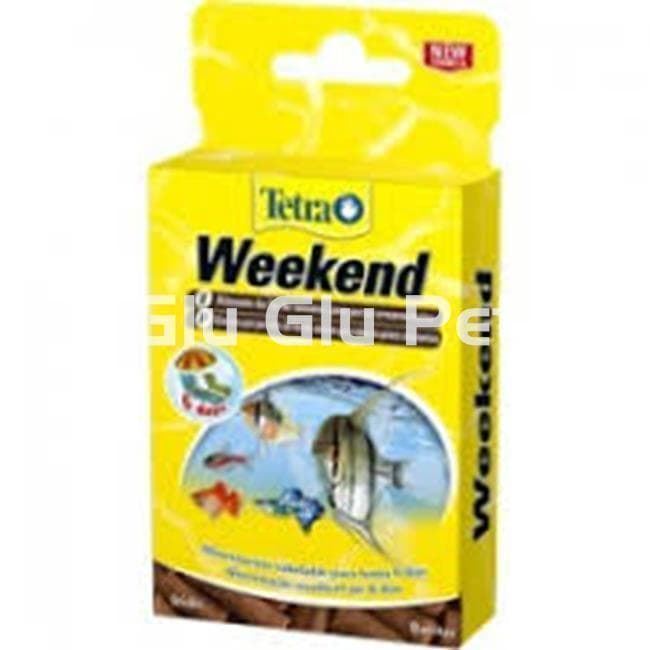
BEHAVIOR AND COMPATIBILITY:
They are social fish.
We will achieve the best results with a small school, which will depend on the size of our aquarium, 5 or 6 specimens would be fine.
Shubunkin Compatible Fish:
They can coexist with other cold water fish, provided they are not too small, nor should they be mixed with fry, as they could become part of their diet.
Although in theory they can share space with other Goldfish, you have to think that some varieties are very slow in their movements and when it comes to eating, while the Shubunkin is a very fast Goldfish.
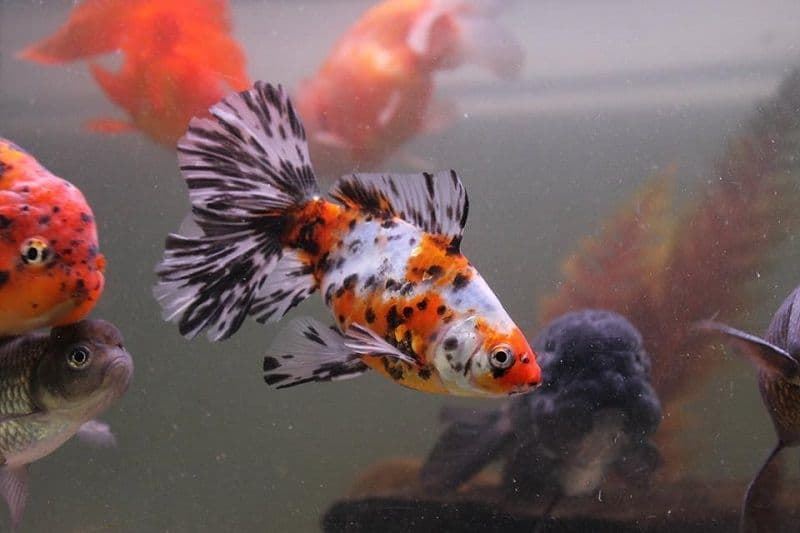
REPRODUCTION FOR THE SUBUNKIN FISH:
They reproduce easily.
It is not uncommon, if we have them in a pond, to realize that the number of fish has increased without having to do anything to achieve it.
The specimens are sexually mature at 8 to 10 months.
Some specialized pages do not recommend that they start reproducing so small, that it is better that they reach a larger size, but if they are free I imagine that they will reproduce when they have the opportunity.
Reproduction coincides with the summer season, when the water is between 18ºC and 22ºC.
These conditions can be reproduced using a mating aquarium, which must have at least 80 liters, in which the temperature must be around 22ºC.
We will place a female and two or three males, to improve the reproduction options.
If everything goes according to plan, the courtship will begin. The males will harass the female, giving her blows on the abdomen to expel the eggs.
Once expelled, the males will fertilize them with their sperm.
The eggs will stick to any nearby surface: plants, rocks.
After spawning is over, it is best to remove the adults from the aquarium so that they do not eat the eggs.
Farrowing cages can be used to keep the eggs safe from adults, filters and other potential hazards.
The incubation period is about 72 hours.
From that moment the fry will begin to swim freely.
We will feed them artemia nauplii.
Other articles that might interest you:
- Common goldfish is a popular pet because of its attractive color and how simple its care is, it will allow the animal to live for many years.
- Goldfish, the best known cold water red fish in the world.
- Red lionhead fish, one of the most popular varieties of glodfish.
- Telescope fish or Ojones fish, because of its bulging eyes.
Important products for your care:
- BLAU KIT CUBIC 42.
- HAGEN NANO AQUARIUM FLUVAL FLORA 30L.
- 100L aqualed aquarium kit with Optimus filter (ICA).
- External or glass filters.
- TETRA GOLDFISH.
- TETRA weekend.
